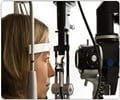Scientists in the UK have found that fish eyes could hold the clue to repairing damaged retinas in humans.
Scientists in the UK have found that fish eyes could hold the clue to repairing damaged retinas in humans.
It has previously been found that a special type of cell is very important in regenerating the retina in zebrafish and restoring vision even after extensive damage.Now, researchers at the UCL Institute of Ophthalmology and Moorfields Eye Hospital believe they may be able to use these cells - known as Muller glial cells - to regenerate damaged retina in humans.
Muller glial cells are also present in the human eye, but it is not clear whether they already automatically repair the retina in some people but not in others.
Retinal damage is responsible for the majority of cases of blindness. Diseases damaging the retina include macular degeneration, glaucoma and diabetes.
As a part of their research the boffins studied these Muller glial cells in the eyes of people from 18 months to 91 years of age. They found that a population of these cells have stem cell properties and are able to develop into a range of different retinal cells. The researchers were also able to develop the cells in vitro into all the types of neurons found in the retina.
When tested in rat models with diseased retinas, the cells migrated into the retina and took on the characteristics of the surrounding neurons.
Advertisement
"Our findings have enormous potential. It may be possible to store the cells in a cell bank and transplant them into the eye or to use cells from a person's own eye," Dr Limb added.
Advertisement
"Our next step is to identify which factor is responsible for blocking the regeneration. Once we know how this mechanism works, we will be much closer to developing a treatment," she said.
Funded by the Wellcome Trust, the Medical Research Council and the Helen Hamlyn Trust, the study is published this month in the journal Stem Cells.
Source-ANI
LIN/B











